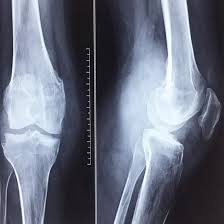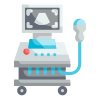Book an Appointment
CECT Right Knee Joint
Medifyhome has collaborated with the best pathology laboratories that are NABL and NABH certified and follow ISO safety guidelines to provide the best CECT Right Knee Joint at an affordable price for needy individuals. A CECT Right Knee Joint is a high-resolution imaging modality in which a CT scan with contrast enhancement is conducted to achieve detailed images of the knee joint. Contrast agent (dye) has been added to the traditional technology of the CT scan, which has made it possible to obtain clearer and more detailed images of bones, cartilage, ligaments, tendons, muscles, and other soft tissues around the knee. This is a non-invasive procedure through which a health care provider can assess the wide range of conditions affecting the knee, from fractures and ligament tears to infections, arthritis, and tumors. The CECT of the Right Knee Joint is a diagnostic procedure used for injuries, joint abnormality evaluation, guiding the treatment decision, and monitoring the existing conditions. A CECT scan may be required if there is a recent knee injury, chronic knee pain, or an inflammatory condition. This can provide important information that may help in accurate diagnosis and effective treatment. To schedule an appointment for CECT Right Knee Joint, simply contact Medifyhome or call our customer care at +919100907036 or +919100907622 for more details and queries.
How Does a CECT Right Knee Joint Work?
A CECT Right Knee Joint is the combination of CT imaging technology with the use of a contrast agent. Therefore, it gives very detailed and high-resolution images of the right knee. This can be explained as follows:
- CT Imaging Technology
CT Scan Basics: A CT scan, or CAT scan, is a kind of X-ray that takes multiple cross-sectional images of the body from many angles. These images are then compiled into a detailed, 3D representation of the area being examined in this case, the right knee joint.
High-Speed Imaging: A patient is lying on the table of the CT scanner, moving inside the machine. When an X-ray beam is rotating around the knee, it takes multiple X-rays and catches them very rapidly, and sends these to the computer which gives one a whole view of the knee.
- Role of Contrast Agent
Contrast Material Injection: In CECT scanning, a contrast agent usually iodine-based is given intravenously into the vein, preferably in the arm. This contrast agent will enhance the clarity of the structures within the knee, which would not be visualized when using a regular CT scan alone.
High atomic number means that the contrast material provides a high contrast in the images taken by X-rays, which makes the soft tissues, blood vessels, and cartilage visible on the bones of the knee joint.
- Detailed Visualization of Knee Structures
It can be useful in bone imaging for capturing details of the knee in bones, such as femur, tibia, fibula, and patella. It is also used in identifying fractures or degeneration of the bones, which can be other skeletal conditions.
Soft Tissue Imaging: The contrast agent enhances structures such as ligaments (like the ACL and MCL), tendons, muscles, and cartilage so they are easier to see. This will aid one in identifying injuries or diseases that may be afflicting these structures, such as a torn ligament, cartilage damage, a tendon injury, or joint effusion-which is fluid within the joint.
- Cross-Sectional Views at Various Angles
It then reconstructs data acquired from a scan into highly detailed cross-sectional images or slices of the knee from multiple angles. These slices are assembled to form an entire 3D model of the knee joint for doctors to evaluate complicated conditions and devise their respective treatments.
Increased Sensitive Detection: The multi-angle, clear images of the CECT scan enable the injury or condition to be spotted in areas that may not show any indication on a single 2D X-ray or MRI.
- Fast and Non-Invasive
The procedure is relatively fast. It only takes 15 to 30 minutes to conduct and is non-invasive. There is no necessity for surgery or biopsy.
Minimal pain: Except for the temporary pain of discomfort during the contrast injection, most patients suffer very minimal side effects during the procedure.
Indications for CECT Right Knee Joint
A CECT Right Knee Joint is applied for diagnosing and assessing wide-ranging conditions of the knee joint. This imaging is most useful when the information cannot be derived from the usual X-rays or standard CT scans, especially in assessing both bones and soft tissues of the knee region. Here are some of the key indications for using CECT for the right knee joint:
- Knee Injuries
Fractures: CECT is very sensitive to a bone fracture, especially for complex or subtle fracture inside the femur, tibia, fibula, and patella that cannot be determined using plain X-rays.
Ligament Tears: It can detect tears or even damage to the most essential ligaments, such as the anterior cruciate ligament (ACL), the posterior cruciate ligament (PCL), the medial collateral ligament (MCL), or the lateral collateral ligament (LCL), and thereby evaluate the grade of injury.
Meniscus Tears: It is very helpful in detecting the tears or injury of the menisci, which are the cartilage discs in the knee, when the symptoms are there despite a normal report on X-rays.
- Arthritis and Joint Degeneration
Osteoarthritis: CECT is very useful in portraying the extent of degeneration of the cartilage and the narrowing of joint spaces along with other changes as a result of osteoarthritis much better compared to plain X-rays.
Rheumatoid Arthritis: This can also image the inflammatory and erosive changes observed in rheumatoid arthritis that can define areas where damage is heavily created by this disease.
Psoriatic Arthritis: Diagnosis and assessment of psoriatic arthritis involves evaluating inflammation in joints with secondary skin manifestations
- Soft Tissue Injuries
Tendon Injuries: CECT is useful in identifying knee tendon injury, for example when the tendons like quadriceps or patellar tendons tear or become inflamed.
Bursitis: It aids in identifying infection or inflammation of the bursae, which are the fluid-filled sacs located around the knee joint, which cushion the knee.
Muscle Tears or Strains: The contrast enhanced scan enables doctors to observe the tears or severe damage to the muscles around the knee.
- Infections
Septic Arthritis: CECT is invaluable for diagnosing septic arthritis, a bacterial infection in the knee joint that can cause severe pain, swelling, and immobility.
Osteomyelitis: It may aid in the detection of infections of the bone (osteomyelitis) that might occur following surgery, injury, or spread of infection from other parts of the body.
Soft Tissue Infections: CECT can be used to depict infections in the soft tissue around the knee, for example, abscess or cellulitis.
- Tumors and Cysts
Benign or Malignant Tumors: CECT can also be helpful for detecting benign or malignant tumor growth in the bones and soft tissue of the knee, allowing an estimation to be made of its size, location, and spread.
Bone Cysts: It may help identify bone cysts, like subchondral cysts (fluid-filled spaces in the bone) that may be associated with degenerative changes or tumors.
Synovial Sarcoma: CECT is generally used for the diagnosis of soft tissue tumors, like synovial sarcoma, which might be present near the knee joint.
Benefits of CECT Right Knee Joint
A CECT Right Knee Joint scan has many benefits, especially when it comes to the diagnosis of complex knee conditions. It involves an advanced use of CT imaging, coupled with the injection of a contrast agent that provides the enhanced clarity of images and, therefore, is invaluable to the health provider. The following are some of the key benefits of the CECT Right Knee Joint scan:
- Both Bone and Soft Tissue Details
Bone Imaging: CECT visualizes the bones in the knee joint at very high resolution, making fractures, degeneration, or abnormalities that may be occult by plain X-rays visible.
Soft Tissue Imaging: The contrast increases the visibility of soft tissues like ligaments, tendons, muscles, and cartilage. Therefore, doctors can diagnose the presence of injuries (e.g., tears or strains), inflammation, or degeneration.
- Knee Conditions Accurate diagnosis of Knee Conditions CECT is highly useful in diagnosing different knee conditions, such as fractures, ligament tears (like ACL or MCL), meniscus injuries, tendonitis, and arthritis. That makes it possible to diagnose correctly and in detail, giving doctors a better basis for deciding the treatment course.
It is easier to visualize soft tissue injuries and joint effusions that could be challenging to see with regular CT or X-ray scans with the contrast material.
- Detection of Infections and Tumors
Infection Detection: CECT can help diagnose septic arthritis (infection of the joint), osteomyelitis (bone infection), or other infections in the knee area by pointing out the inflammation or abscess. It gives a clearer picture of infected areas than the other imaging techniques.
Тumor Identification: The imaging capabilities of CECT are very useful for the demonstration of benign as well as of malignant tumors, such as synovial sarcoma or bone cysts, in addition to their sizing and localizing with effects on the surrounding structures.
- Detailed Assessment of Joint Degeneration
CECT is useful in evaluating the degenerative diseases, which include conditions like osteoarthritis and rheumatoid arthritis where the cartilage wears out along with the bone. It captures the bone spur joint space narrowing of the cartilage loss as well as the extent of damage of the disease and has been useful in assessing its progression.
It also aids doctors in staging the severity of arthritis, hence assisting them in developing proper treatment plans, such as physical therapy, medication, or surgical intervention.
- Non-Invasive and Quick Procedure
It is a non-invasive procedure where no cuts or incisions are required. The patient just gets the injection of the contrast material and then just lies still for a few minutes while the CT scanner takes multiple images.
It is relatively quick, and its time consumption is generally less than 15 to 30 minutes, making it less time-consuming than some other diagnostic methods like MRI.
Preparation for CECT Right Knee Joint
Proper preparation is important for ensuring that a CECT Right Knee Joint (Contrast-Enhanced Computed Tomography) scan is successful and yields accurate results. Below are the typical steps involved in preparing for the procedure:
- Consultation with Your Doctor
Medical History: You will be seen by your doctor before the scan. He will ask you about your medical history, current health problems, and previous knee injuries or surgeries. You must tell him about:
Allergies, especially to contrast agents or iodine-based products
Kidney disease, as the contrast agents are filtered by the kidneys
Pregnancy or the possibility of being pregnant, as CT scans use radiation
Other health concerns that could influence the scan and outcome
Medications: Report to your doctor all medications you are taking, including diabetes-related drugs that can impact kidney functionality, or if you are on anticoagulants, which may be relevant to any knee injuries.
- Fasting- If required
Fasting instructions: In case a contrast agent is used intravenously, you may be told to fast for several hours before the procedure. It is often necessary to fast for 4 to 6 hours before taking the scan. This will result in your stomach being empty and also minimize the potential nausea or other reactions you might experience to the contrast material.
Hydration: You may be able to receive fluids, but follow specific physician orders about whether and what to drink.
- Drape and Remove All Jewelry/Metallic Items
Pants/Shirt: A hospital gown will be given so as not to interfere with your exam. Wear loose comfortable clothing without metal in garments that could interfere with scan: zippers, buttons.
Metal Objects: Please remove any jewelry, piercings, or accessories (such as watches, earrings, or necklaces) before the procedure because metal may interfere with your CT images.
- Contrast Material Injection
Insertion of an IV Line: A contrast agent is given intravenously just before beginning your CT scan. Contrast agents contain iodine-based agents. This agent assists in visualizing the soft tissues, blood vessels, and cartilage of the knee.
Allergy Concerns: If you have been known to have an allergic response to contrast agents, always advise your doctor. Sometimes they prescribe an alternative contrast or a pre-medication ahead of time to prevent severe allergic reactions.
Possible sensations during the contrast injection- You might feel a temporary, brief sensation of warmth, some may experience a metallic feeling in the mouth, others might feel flushing.
- Talk About Your Comfort and Anxiety
Comfort Measures: If you are anxious about the procedure or have a hard time staying still, let your healthcare provider know. Sometimes, a small dose of sedative can be prescribed to help you relax.
Positioning for the Scan: During the scan, you will be asked to lie on your back, with the right knee positioned appropriately. The technologist may ask you to keep steady for a few moments to take imaging.
- Test Type: CECT Right Knee Joint
- Preparation:
- Wear a loose-fitting cloth
- Minimum 4 hours fasting required
- Carry Your ID Proof
- Prescription is mandatory for patients with a doctor’s sign, stamp, with DMC/HMC number; as per PC-PNDT Act
- Reports Time: With in 4-6 hours
- Test Price: Rs.4000
How to book an appointment for a CECT Right Knee Joint?
To schedule an appointment for CECT Right Knee Joint, simply contact Medifyhome or call our customer care at +919100907036 or +919100907622 for more details and queries.
What is the CECT Right Knee Joint?
CECT Right Knee Joint is a highly specialized imaging process that uses a contrast-enhanced CT scan to provide detailed images of the knee joint, including bones, ligaments, cartilage, muscles, and soft tissues. The contrast material makes the structures more visible to better diagnose and assess various conditions related to the knee.
Why do I need a CECT scan for my knee?
It can be applied to assess an injury in terms of a fracture or tear in the ligaments. Diagnose any arthritis infection and soft tissue anomalies, and it can identify the growth of a tumor surrounding the knee. This allows a doctor to accurately make diagnoses and treatment options.
Does the CECT Right Knee Joint cause pain?
No, the procedure itself isn’t painful. The worst discomfort you might experience is from the contrast injection, which can cause a brief warm sensation or a metallic taste in the mouth. These sensations usually fade away quickly.
Do I need to prepare for a CECT Right Knee Joint?
Yes, generally, you will be told to take off any jewelry or metallic articles and wear a gown provided by the hospital because those objects may interfere with the imaging procedure. Depending on whether a contrast is employed, you may be told to fast for several hours before the exam.
How long will a CECT Right Knee Joint procedure take?
It takes approximately 15 to 30 minutes to complete the procedure. The actual CT scan is very short, but when you are positioned, the contrast material will be administered through an intravenous line.
What are the risks with CECT?
CECT is relatively safe. However, some associated risks include:
Allergic reactions to the contrast material are rare but can include mild symptoms such as hives or a feeling of warmth.
Radiation exposure: The amount of radiation from a CECT scan is low, but it is still a consideration, especially for pregnant women. Always inform your doctor if you are pregnant or may be pregnant.
Can I undergo a CECT if I have kidney problems?
If you have a problem with your kidneys, tell your doctor before the test. Contrast materials are excreted through the kidneys. Severe disease of the kidneys might even preclude the use of contrast. Tests that might be done beforehand include some tests of your renal function.
When can I expect the results?
The results of a CECT scan are usually available in 24 to 48 hours. The radiologist will interpret the images, and your doctor will discuss the findings with you and provide recommendations based on the results.
Can CECT detect soft tissue injuries like ligament or tendon tears?
Yes, CECT is very effective for the visualization of both bone and soft tissue injuries. It is quite useful for the detection of ligament tears, such as ACL or MCL, tendon damage, and cartilage damage, offering more information than can be provided on traditional X-rays.
Most Booked Ct Scan Parts
With Medifyhome, book a CT scan get the fastest appointment scheduling at NABH & ICMR Certified diagnostic centers near you. Trusted reports, expert radiologists, and seamless service-only a click away!
Why Choose Medifyhome for CECT Right Knee Joint?
Medifyhome is an online medical consultant that offers home services not only in your city but also in all major cities of India, such as Hyderabad, Chennai, Mumbai, Kolkata, and others. This makes it easy for us to work with diagnostic centers that boast of having the most accurate equipment. The customer service for booking the appointment for the services is available 24/7, and Medifyhome also comes with instructions. Medifyhome not only has the best diagnostic centres, but it also offers them at very cheap prices. If you have been tested, you can promptly schedule an appointment with a healthcare service through our list of skilled physicians. For an appointment for CECT Right Knee Joint, you can chat with us through Medifyhome or call our customer care at 919100907036 or 919100907622 for more information or inquiries.













